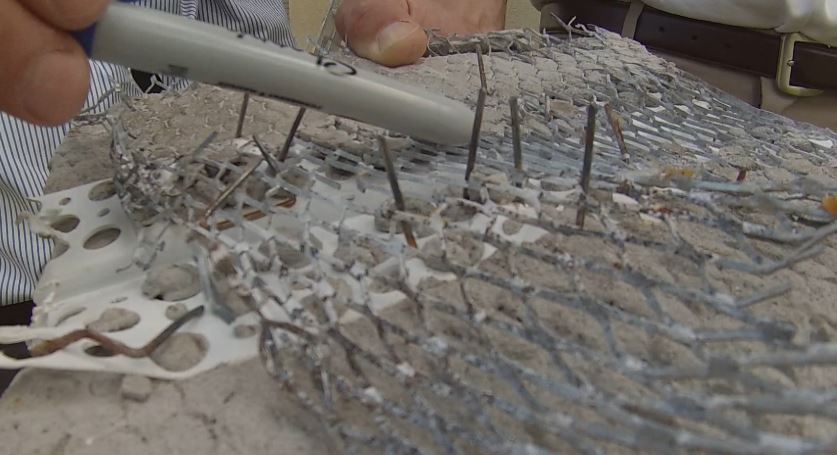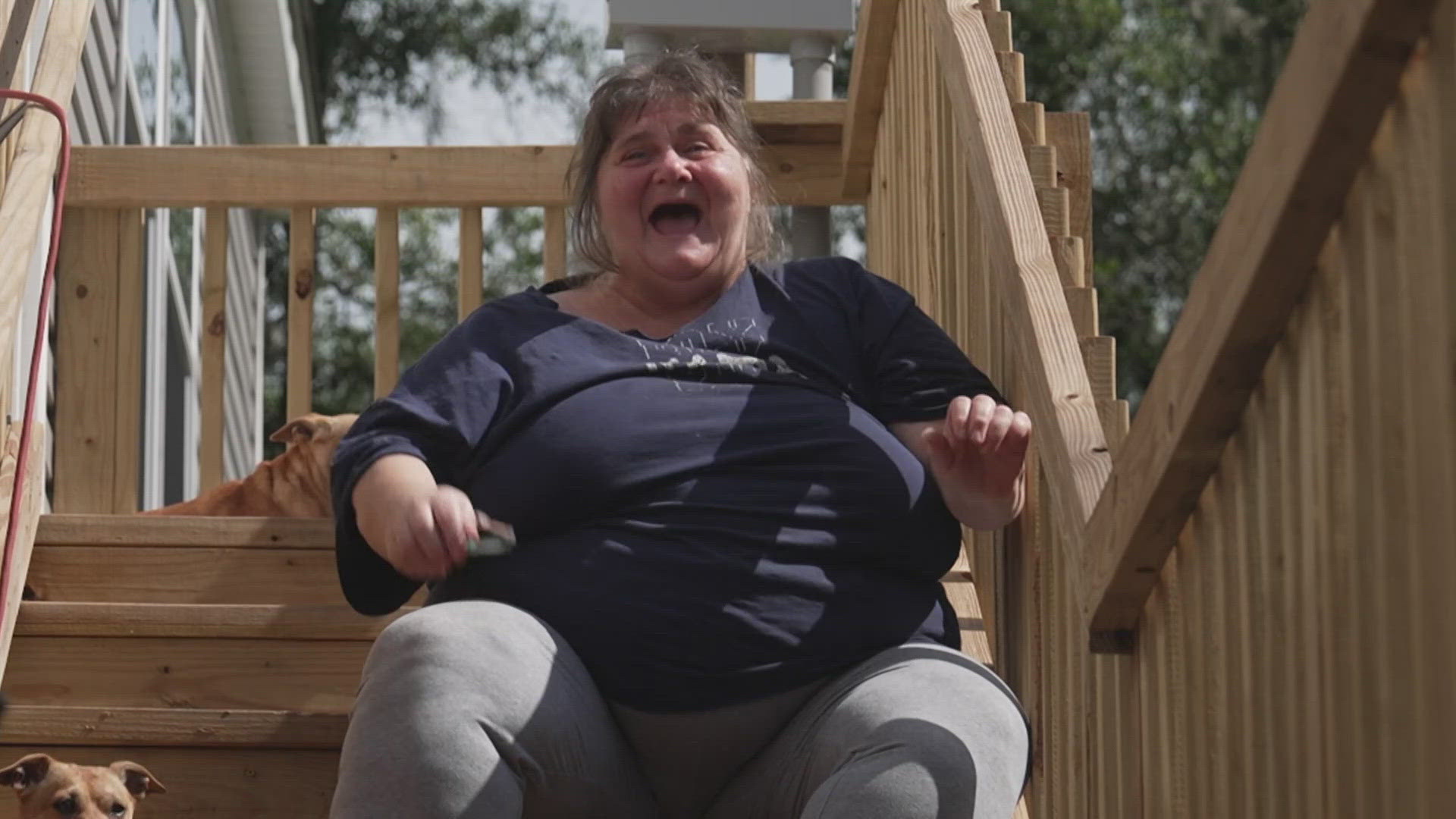![635705692347691716-6[ID=29106911] ID=29106911](http://www.gannett-cdn.com/-mm-/2428439e83a0241935dd84e09467cf794f6cac7c/c=116-0-721-455&r=115x86/local/-/media/2015/06/22/WTSP/WTSP/635705692347691716-6.JPG)
HILLSBOROUGH COUNTY, Florida -- Engineers say massive stucco failures in Florida homes, many just five-to-seven years old, can be directly connected to negligence in the installation process. Yet homebuilders, legally tasked with supervising the application of the popular concrete-like coating, have gone to great lengths to distance themselves from many of the problems.
Wednesday night, 10 Investigates exposed how shortcuts in installing stucco and the wire lath underneath it - especially during Florida's building boom - have led to problems in tens of thousands of homes across the state. Because so many problems remain hidden inside homes' walls, the number of affected owners could be in the hundreds of thousands. With repairs on a single-family home running between $50,000 and $100,000, the widespread stucco problems could mean upwards of a billion dollars in damage statewide.
Many homeowners may not realize that little cracks in stucco could be indications of bigger problems. When stucco cracks, it can allow water in, which can lead to rotting wood. On Florida's West Coast, wood frames are typically constructed on the second floor of a home, over a first floor of cement/cinder block. On Florida's East Coast, damage can be even more significant, where entire homes were frequently built with wood frames.
Florida state statute requires the general contractor of each new home to directly supervise and control all construction. But professional engineer Thomas Miller with Structural Engineering and Inspections, Inc. says there's no way the proper supervision was in place at many of the five- to 10-year-old communities he's visited recently.
"It appears that often the stucco installation was not directly supervised and controlled by a licensed contractor," said Miller, who also serves on the board of Florida's Lath and Plaster Bureau.
In one extreme case, KB Home's Willowbrook Townhomes in Lakewood Ranch, the home-builder admitted construction defects by blaming its subcontractors in a lawsuit. But the company initially denied wrongdoing, prior to extensive television coverage documenting the dangerous problems. Willowbrook ultimately required nearly $50 million in repairs for rotting wood and bad stucco.
10 Investigates reviewed thousands of home permits from Sarasota to Tampa to Orlando, finding KB Home's general contractor on almost every single new home site was Vice President George Glance. Glance was responsible for supervising more than 4,000 new homes in West/Central Florida between 2005 and 2014 - likely between 50 and 100 at any given time.
By all accounts, it would have been virtually impossible for Glance to visit and supervise that many sites every day for 10 years. But Florida courts have a liberal view of the word "supervision," and KB Home provided no comment regarding the widespread stucco concerns.
10 Investigates found similar mass-permitting from other home-builders: one former Pulte Homes executive pulled permits on hundreds of new homes from 2007 to 2013; one Lennar Homes executive pulled more than 1600 permits the last three years in Hillsborough County alone.
While Lennar Homes stopped replying to 10 Investigates' requests for an interview, a Pulte Homes representative politely declined, writing, "Unfortunately, we don't have anyone who can do an on-camera interview at this time."
When asked if there was ever a time to interview, a Pulte spokesperson wrote, "Not at this time. Thanks."
In a separate statement, the spokesperson wrote, "For more than 30 years, Pulte Homes has been building homes in the Greater Tampa Bay area. Pulte Homes stands behind every home we build. If there are issues that require our attention, our responsibility is to respond quickly and thoroughly."
Where were the inspectors?
Because stucco installation does not require a license, most building departments were not inspecting its quality for many years.
"It was happening at such a volume, it was difficult to stay on top of ... we didn't even look at (stucco)," said Hillsborough County's chief building inspector, Pete Ooms.
Ooms admits it would have been nice "to have a time machine" to return to the building boom years of 2005-2010, but says the county has since upped its education - and inspections - on stucco and lath installation.
Hillsborough County boasts one of the local building departments that have since added a new layer of inspections to ensure stucco and lath are installed to code.
However, the policies vary greatly across the state, and many Tampa Bay-area building departments don't inspect stucco at all.
Pasco County building officials declined interviews for this story, writing the county "does not inspect stucco, only the underlayment in line with Florida Building Code. Chapter 1 for the Florida Building Code outlines the inspection of the roof and wall dry in, not the stucco itself ... Pasco is clearly properly following the Florida Building Code."
However, the code didn't appear sufficient to protect tens - if not hundreds - of thousands of Florida homeowners who likely have stucco defects in their young homes.
Other building departments responding to questions about stucco inspections include Polk, which inspects wire lath installation, and Sarasota, which says it has added a special focus on lath inspections to help prevent stucco problems.
Florida's agency that licenses contractors, the Department of Business & Professional Regulation (DBPR), says it doesn't inspect stucco because it is not a licensed industry. And Florida's attorney general has a two-year-old investigation open on KB Home which has not yet netted any public results.
"We continue to aggressively investigate this matter and as our investigation is ongoing, it would not be appropriate to discuss the details at this time," said Attorney General spokesperson Whitney Ray of the KB Home investigation. "While we are not in a position to comment on the existence of similar investigations, if any one believes they have been the victim of any unfair and deceptive trade practices similar to those alleged in the our KB Homes investigation, we would be interested in hearing from them. Homeowners can contact our office at (866) 9NO-SCAM or visit myfloridalegal.com."
Miller also suggests homeowners take a good look at their own stucco for any possible signs of water intrusion, reaching out to a professional engineer with any questions.
For tips on how to spot stucco troubles, scroll through the photo gallery above.
Find 10 Investigates reporter Noah Pransky on Facebook or follow his updates on Twitter. Send your story tips tonoah@wtsp.com.


